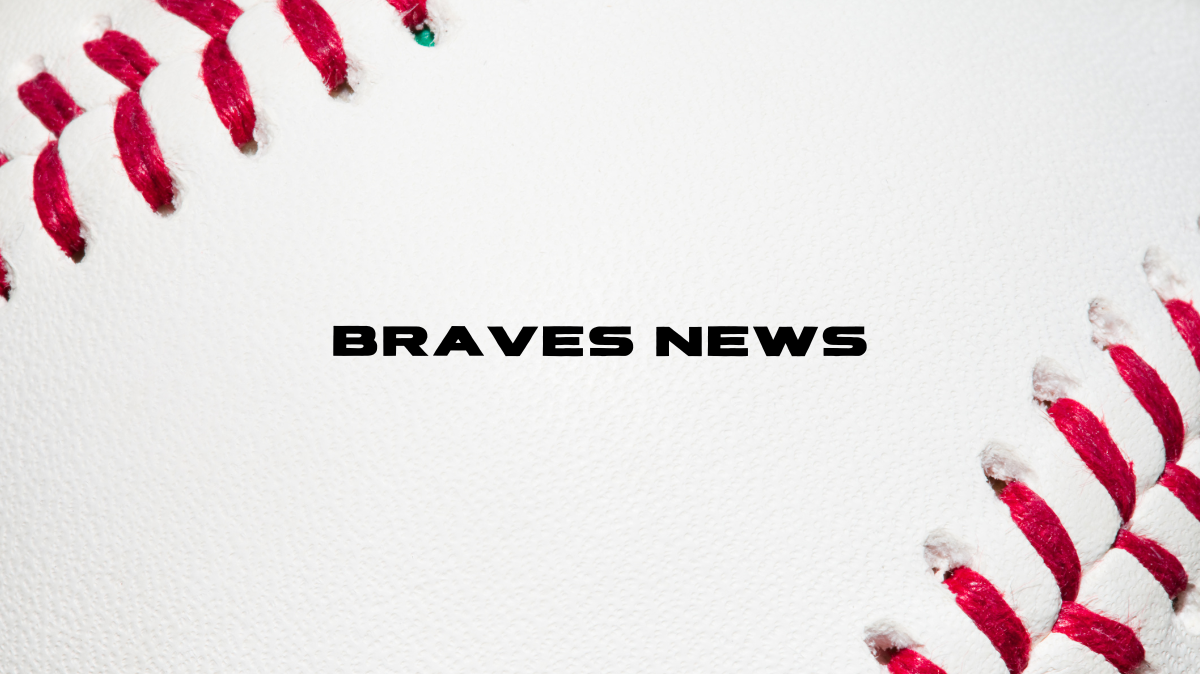Many Atlanta Braves fans enjoy watching the games and rooting for our team, but the logistics of roster management can sound like a foreign language. We keep you up to speed with a current Braves 40-man roster and explanations as to how the 40-man works! Enjoy.
Atlanta Braves 40-Man Roster
Pitchers (SP and RP) on Braves 40-Man Roster
- Ian Anderson
- Aaron Bummer
- Dylan Dodd
- Bryce Elder
- Max Fried
- Daysbel Hernandez
- Raisel Iglesias
- Joe Jimenez
- Pierce Johnson
- Ray Kerr
- Dylan Lee
- Reynaldo Lopez
- Tyler Matzek
- A.J. Minter
- Charlie Morton
- Penn Murfee
- Angel Perdomo
- Chris Sale
- AJ Smith-Shawver
- Jackson Stephens
- Spencer Strider
- Darius Vines
- Allan Winans
- Huascar Ynoa
Catchers on Braves 40-Man Roster
1B on Braves 40-Man Roster
2B on Braves 40-Man Roster
- Ozzie Albies
- Luis Guillorme
SS on Braves 40-Man Roster
3B on Braves 40-Man Roster
OF on Braves 40-Man Roster
Designated Hitter
What is a 40-man roster?
Every team in Major League Baseball has a 26-man active roster of players. In order for a player to be promoted to the 26-man active roster, he must first be on the 40-man roster.
If a team wants to promote a minor leaguer who is not on the 40-man roster, they must replace a current player on the 40-man roster.
How do teams remove a player from the 40-man roster?
Players on the 40-man roster who need to be removed will be designated for assignment, traded, released, or placed on the 60-day IL.
What does it mean when a player is designated for assignment or DFA’d?
When a player is DFA’d he is removed from the 40-man roster. The club has seven days to either trade the player or place them on waivers. If a player is placed on waivers, this makes them available to be claimed by other teams.
If the player clears waivers without being claimed by another team, they can now be outrighted to the minors of the original team that designated the player.
However, there is another stipulation. If the player has more than three years of Major League service time, he can decline the assignment and elect free agency. If the player has more than five years of service time he can outright reject the assignment.
So to recap, when a player is on the 40-man roster he must be designated for assignment to be removed from the roster. Once removed he will pass through outright waivers he will be outrighted to the minor leagues, in which case if he has enough service time he can outright refuse the outrighting to the minor leagues which is a subsequence of the outright DFA. Make sense? Great!
Hypothetical Example of Getting Designated for Assignment: The Braves designated Keegan McGuiggan for assignment to make room for literally anyone else. McGuiggan was designated for assignment as the first step in removing him from the Braves 40-man roster. This made room for the team to add the new player since there are only 40 spots.
McGuiggan is now placed on waivers for other teams to claim the rights to him. Unsurprisingly, nobody claims him and the Braves can now outright him to the minor leagues, no longer a part of the 40-man roster.
Within seven days of designating McGuiggan, the team could trade him to another team.
Why would a team trade for a player who has been DFA’d?
Another team may have a need for the player that was just designated. The team can circumvent the whole waiver process by proposing a trade. This way, they don’t have to risk losing the player they desire if there are other potentially interested teams ahead of them in the waiver order.
What if a player is claimed off waivers by another team?
Upon being claimed, the player is immediately placed on the new team’s 40-man roster. Gone from one, added to another!
If the player has options remaining, the team can choose to option the player to the minor leagues or place him directly on the 26-man active roster. Either way, he’s back on a 40-man roster! Good for him!
Unfortunately, the cycle is viscious as the team who just acquired the new player must now remove someone on their current 40-man roster to make room. Here we go again…
What if a player on the Braves 40-man roster does not open the season on the major league roster?
That player must be optioned to the minor leagues. Players typically have three option years. Players with no options remaining must be…(drumroll please) designated for assignment!
Why do some players who have never played in the major leagues, end up on the Braves 40-man roster?
A player has to be assigned to the 40-man roster after four seasons in order to protect them from the Rule 5 Draft. If the player signed at or before the age of 18, they have five years. Look at Braden Shewmake as an example. Shewmake was a solid prospect and earned an honest look the spring of 2023.
The team has to keep him on the 40-man roster or he would be exposed to being nabbed by another team in the Rule 5 Draft. This rule forces a team’s hand and ensures opportunities are provided to prospects to earn playing time. Ultimately, if the Braves don’t have a place for Shewmake, he will get an opportunity elsewhere, thanks to this rule.




